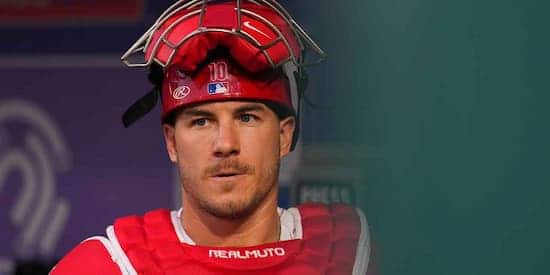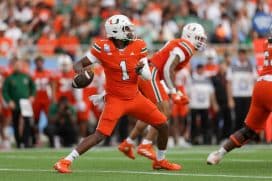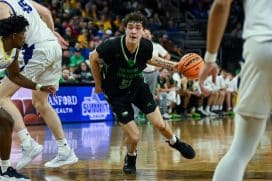Phillies
THE FAN WHO KNEW TOO MUCH

For a brief moment Sunday afternoon the Phils had a chance. When backup backstop Garrett Stubbs launched a humidity-kissed fly ball into the right field stands in the bottom of the 8th the Phils had cut the Cubs’ lead to a single run and hey, who knew what could happen. Of course, not much did; the Cubs held on and beat the Phils 4-3, sweeping their weekend series.
Oh, well. If nothing else, we got to see Stubbs shine; along with his homer he aggressively took third base on a Kyle Schwarber groundout in the 6th, setting up the Phils’ second run of the game. It was fun to watch a guy who doesn’t play all that often play well and with so much energy. On an oppressively hot day it was at least something positive to take away from the afternoon if you’re a Phillies fan.
The Peacock crew that broadcast the game took notice of Stubbs as well, with play-by-player Jason Benetti, and color commentators Ryan Sweeney and John Kruk all lauding Stubbs at one point or another during the broadcast. As Kruk noted in the 6th, Stubbs barely plays, so it was impressive that he was not nearly as rusty as we might expect. After Stubbs’s homer in the 8th all three announcers jumped on the Stubbs bandwagon, which was nice to see. Stubbs looks every bit the cup-of-coffee-type big leaguer so here’s hoping someone forwards him a copy of Sunday’s broadcast. His grandkids will no doubt be thrilled one day to hear what all these big time announcers had to say about their pop pop way back when, before they were born.
But enough about Garrett Stubbs. We’re here to talk about what else these announcers had to say that afternoon. Because after praising Stubbs they each went on to laud the guy in front of him on the depth chart – JT Realmuto, with each highlighting JT’s perseverance and love of the game. “JT Realmuto wants to play every single day,” Kruk said. “Yup,” Sweeney concurred. “People like JT Realmuto don’t come around very much in this game anymore, guys who want to play that much behind the plate,” added Benetti.
Huh?
Of course, as Phillies fans, we know this is garbage. We know because it wasn’t even two weeks earlier that the same JT Realmuto, who “wants to play every single day” decided he was pretty okay with forfeiting approximately $260,000 in salary and not traveling with the club for its two-game series in Toronto. Realmuto was, and most likely still is, unvaccinated and decided that he’d pass on the two-game set with the Blue Jays because “I’m not going to let Canada tell me what I do and don’t put in my body.” That sure as hell doesn’t sound like a guy who wants to play every single day to me. Whatever you think about Realmuto (and Aaron Nola and Alec Bohm, who likewise were prohibited from crossing the border into Canada due to their status as an unvaxxed Americans), you couldn’t help but listen to those comments yesterday and at least furrow your brow. Because you knew you were being sold a fiction. It was so clear. So obvious.
It wasn’t always this way.
Before Philadelphia sportswriters such as Larry Merchant, Stan Hochman, Sandy Grady, and Bill Conlin came on the scene in the early ‘60s fans didn’t know much of anything about the players they saw out on the field. Oh, they thought they did, but they were being fed bunk by a sportswriting fraternity that was beholden to the teams they covered, given that their paychecks were sweetened via off-season PR work thrown their way by club management. You got that right – the typical beat writer up through the Leave It to Beaver era was literally a hack promotions guy for the team he covered, allegedly objectively. Yeah, right.
All of that changed when Merchant was hired at the tender age of 26 to be the sports editor of the Philadelphia Daily News. Merchant immediately made it his #1 charge to ferret out the best writers with the most compelling perspectives he could find and wound up hiring Hochman, Grady, Conlin, boxing writer extraordinaire Jack McKinney (who was on the opera beat before Merchant got ahold of him), and others to create what might very well have been the greatest sports section in the history of American journalism. If you think you can name a better one than the Daily News sports section of the 1960s, go ahead. I don’t think you can.
Merchant had a kindred spirit in a tubby, walrus-faced writer at the New York Post, Leonard Shecter. Together they changed the nature of sports journalism, elevating it from a cadre of jock sniffers to an actual profession — one of sniffing out the stories behind the box scores; the stories that the team and sometimes even the players didn’t want anyone outside of the locker room to know about. Merchant, Shecter and their pals were determined to bring to their readers the people inside the uniforms, the brains inside the ballcaps, the unbuffed personalities that toiled for the local nine. By the end of the decade fans knew a helluva lot more about their heroes than ever before (Shecter topped off his career by quitting the Post and teaming up with Jim Bouton to write the iconic Ball Four, in 1970). In fact, thanks to Merchant and Shecter’s influence, and the sportswriters across America they spawned and nurtured, fans soon knew so much about the players it was an open question as to whether they could ever be looked-upon as heroes at all anymore — only the most naïve or willfully ignorant fanboys could see Mickey Mantle post-Ball Four as they had prior to its release.
So what does this have to do with JT Realmuto? Everything. Because we want to think that these writers (christened “the Chipmunks” by old-school New York Post columnist Jimmy Cannon; it was not a compliment) heightened our enjoyment of the game. More information equals better information, no? Well, yes, but perhaps only to a degree. Because now we know so much about these guys that, let’s be honest, some of them are just plain hard to root for. Kyrie Irving is a transcendent basketball player but he’s not convinced the earth isn’t flat, and that’s not even the craziest thing we know about him. Curt Schilling is a Hall of Fame talent who can’t stop putting his foot, along with seemingly every other appendage, in his mouth. And JT Realmuto, Alec Bohm, and Aaron Nola are unapologetic anti-vaxxers. Can you watch Irving on the floor or Realmuto behind the plate and not think, just a little, about their personal views on this or that? I can’t. But I wish I could.
Because, really, I don’t care what Kyrie Irving, Curt Schilling, JT Realmuto, Alec Bohm or Aaron Nola think. I don’t care what their politics are, who they voted for, what their position on guns, free speech, you name it, are. But now that I’ve gotten a glimpse I can’t get beyond it. This is my failing, I know. My failure to compartmentalize. And I revere the writers who changed sportswriting in the 1960s because they revolutionized the profession and made it so much better, so much more real, so much more honest. So much more fun.
But there are times I’m envious of the baseball fan of 1925 who probably only loved Babe Ruth even more after reading of the momentous belly ache that was holding the Bambino out for the early part of the season. Saved the slap of reality of the venereal disease and possible alcohol poisoning that was actually keeping the bloated Babe away from the Yankees until he could clean up and detox, this fan’s reverence for his hero was most likely heightened rather than diminished when he finally did return to the field forty games into the season. And sometimes that’s not the worst thing in the world.
I dunno. I’m grateful that we as fans know so much about the players we root for nowadays. But sometimes I think I’d just prefer to believe that JT couldn’t make the Toronto trip because he had eaten too many hot dogs.





